Paul’s ART STUFF on a train # 120: ‘Queen Alice’

Alice Anderson at the Wellcome Collection
Franco-British artist Alice Anderson reigns into autumn with big solo shows in London and Paris. AT the Wellcome Collection (‘Memory Movement Memory Objects’, to 18 Oct) she sticks to the core of her current practice – weaving everyday items into copper thread through a ritualistic and dance-like performative process. Anderson sees this as a recording method which avoids digitalisation’s outsourcing of memory from the human to the virtual – cue the scientific links which fit the Wellcome’s programme. She and her performers have mummified all manner of objects, singly and as assemblages and installations, with the possible sub-text of burying the excesses of consumer society. There’s an autobiographical aspect, too: Anderson’s previous practice has often referred to her own striking copper hair. Meanwhile in Paris ’Data Space’ (to 20 Sept) occupies a circular run of rooms on the 5th floor of Espace Culturel Louis Vuitton. Anderson has woven round copies of its features and installed them as sculpture. Not only are they transformed by displacement and the seductive coppery sheen, but they are reshaped either by the process (the ceiling panels buckle and warp) or by the way they are configured (the floorboards are shown in circular formations, the lift cables loop intestinally). It’s as if the space is inhabited by a mis-recollection of itself. Go to Paris, too, for Anderson’s painting-like thread abstractions and her trembling piles of copper wire mesh, poised on the boundary between form and formlessness like memories yet to take shape…
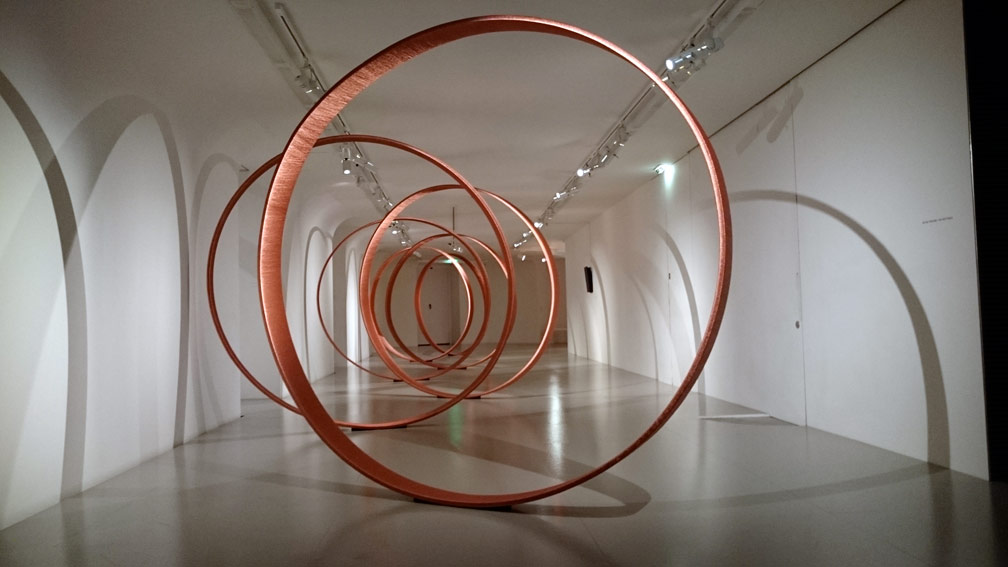
Floorboards at the Espace Culturel Louis Vuitton
Paul’s ART STUFF on a train # 119: ‘The Victorian Tendency’
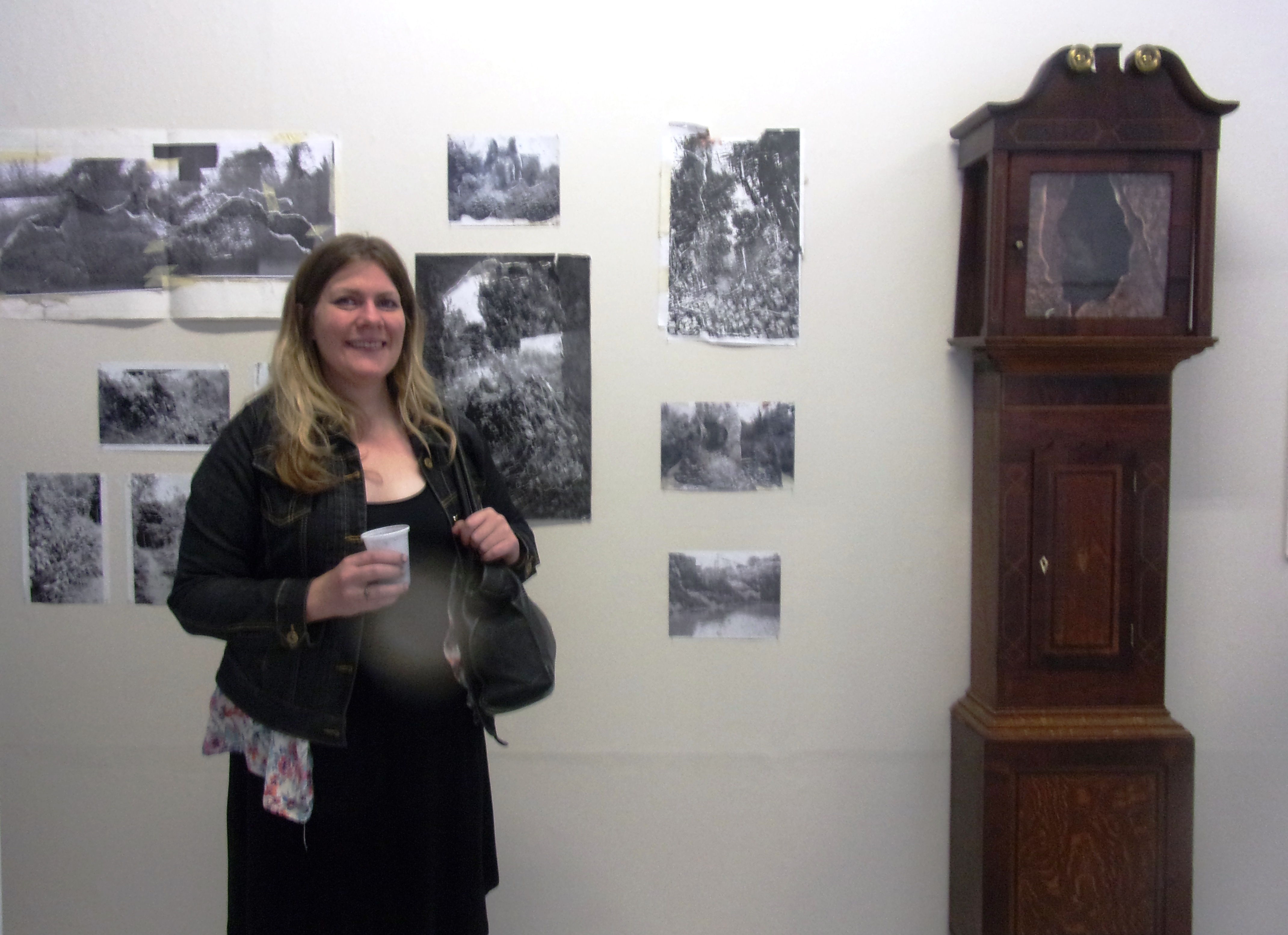
Juliette Losq at Dolph Projects
The art of Victorian age is not itself much in fashion, but heading back to it as a source to twist does seem to be – as in Dolly Thompsett’s show at Art First (to 14 Aug) or the forthcoming retrospective of Mat Collishaw (Walsall, 25 Sept – 10 Jan). I’ve just had complementary chances to engage with Juliette Losq’s take on the age. At Dolph Projects in Streatham (to 18 July) you could see the collectibles in which her work originates: etchings, woodcuts, antique cabinets, and old newspapers and journals in which she can ‘savour the advertisements they held for things long-since forgotten and made redundant’. Losq also began to photograph suburban clearings as symbolic spaces between wilderness and civilisation. Adapting the etching process to make one-off drawings which carry a similar aesthetic to prints, Losq uses her own photographs as starting points for landscapes which she complicates and disrupts visually and psychologically by importing motifs from her collection. She also makes installations which engage with architectural space by combining historic furniture with layers of intricate drawings on torn paper. We’re lured into lushly vegetative landscapes which come to seem threateningly overgrown. We sense past traumas disturbing the present, or the archetypal Gothic nightmare beneath the dream. There’s a good selection of Losq’s finished work at Coates & Scarry (8 Duke Street St James’s to 4 August), where she shows with two other artists with a Victorian flavour, Kate MccGwire* and Jayne Anita-Smith.
*see Paul’s ART STUFF on a train #14: ‘Feathers and Light’
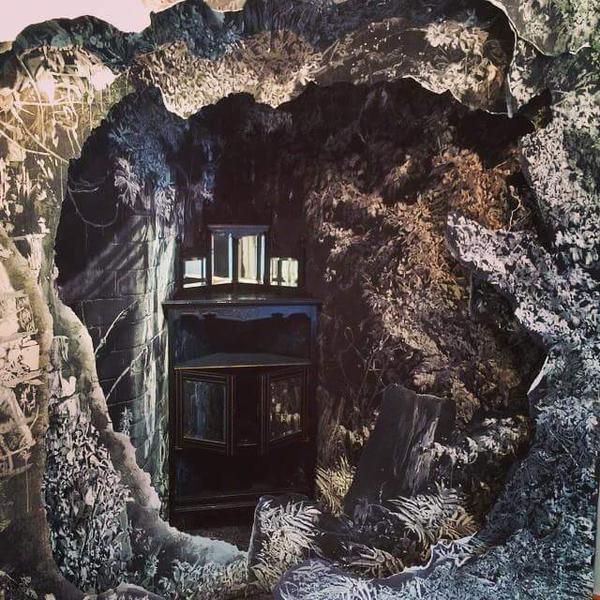
Julitte Losq: ‘Covert’, 2015 – ink and watercolour on paper, gesso on ebonised corner cabinet (at Coates & Scarry)
Paul’s ART STUFF on a train # 118: ‘Ruby Ruby Ruby’
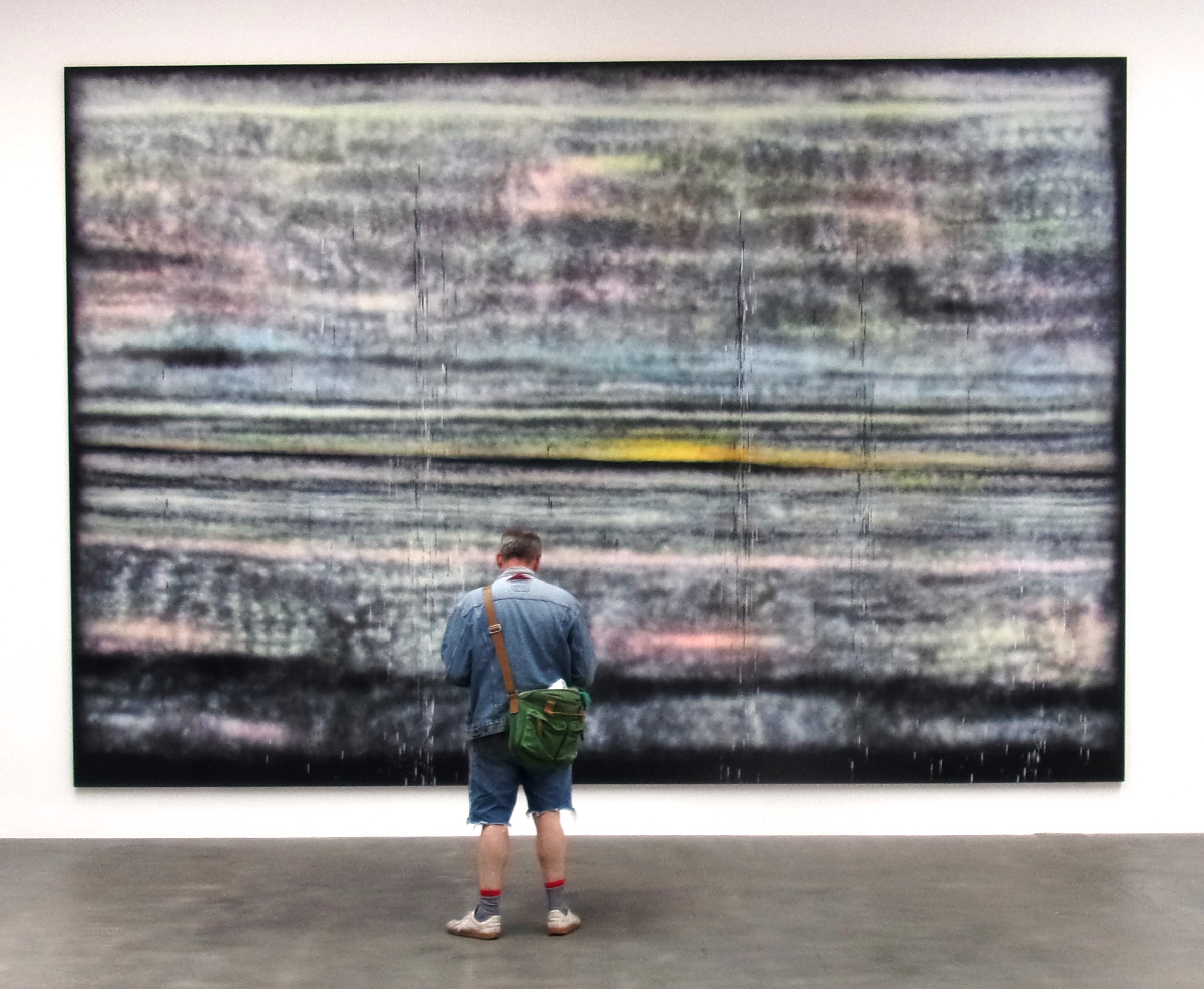
Sterling Ruby: ‘SP311′, 2014
Londoners currently have a threefold chance to consider the work of the LA-based American artist Sterling Ruby (born 1972). The Gagosian Gallery’s excellent survey of spray painting has one of the biggest (‘SP311′, 2014 is 235 x 160cm) of the series for which Ruby first became known. The tropes of abstract painting clash with those of the street, setting graffiti or its removal against, say, Rothko or Stella. Ruby uses a spray can up close until it is exhausted, causing drips and streaks as well as an ethereal sense of structure not quite coming into focus. Inigo Philbrick has several of these, and the David Roberts Art Foundation pairs one with a studio floor collage and one of Ruby’s Monument Stalagmite sculptures. They’re made by pouring urethane resin down a wooden armature suspended from the studio ceiling. After drying over a couple of months, the structure is inverted it to yield a wet-looking phallic shape – often over 5m tall, but made to seem vulnerable by the apparent need for a wooden crutch come flying buttress to support the upthrust. Ruby also makes ceramics, and in all three media he generates the somewhat mournful sense that the spray paint, clay and urethane which were so fluid and full of possibilities have become geologically fixed. That could be why the stalagmite is implicated by the label PTAC – from the US police expression ‘Party to a Crime’ – the offence being to close down options.
Sterling Ruby: ‘Monument Stalagmite/P.T.A.C.’, 2012
Paul’s ART STUFF on a train # 117: ‘Mirrored in Brown’s’
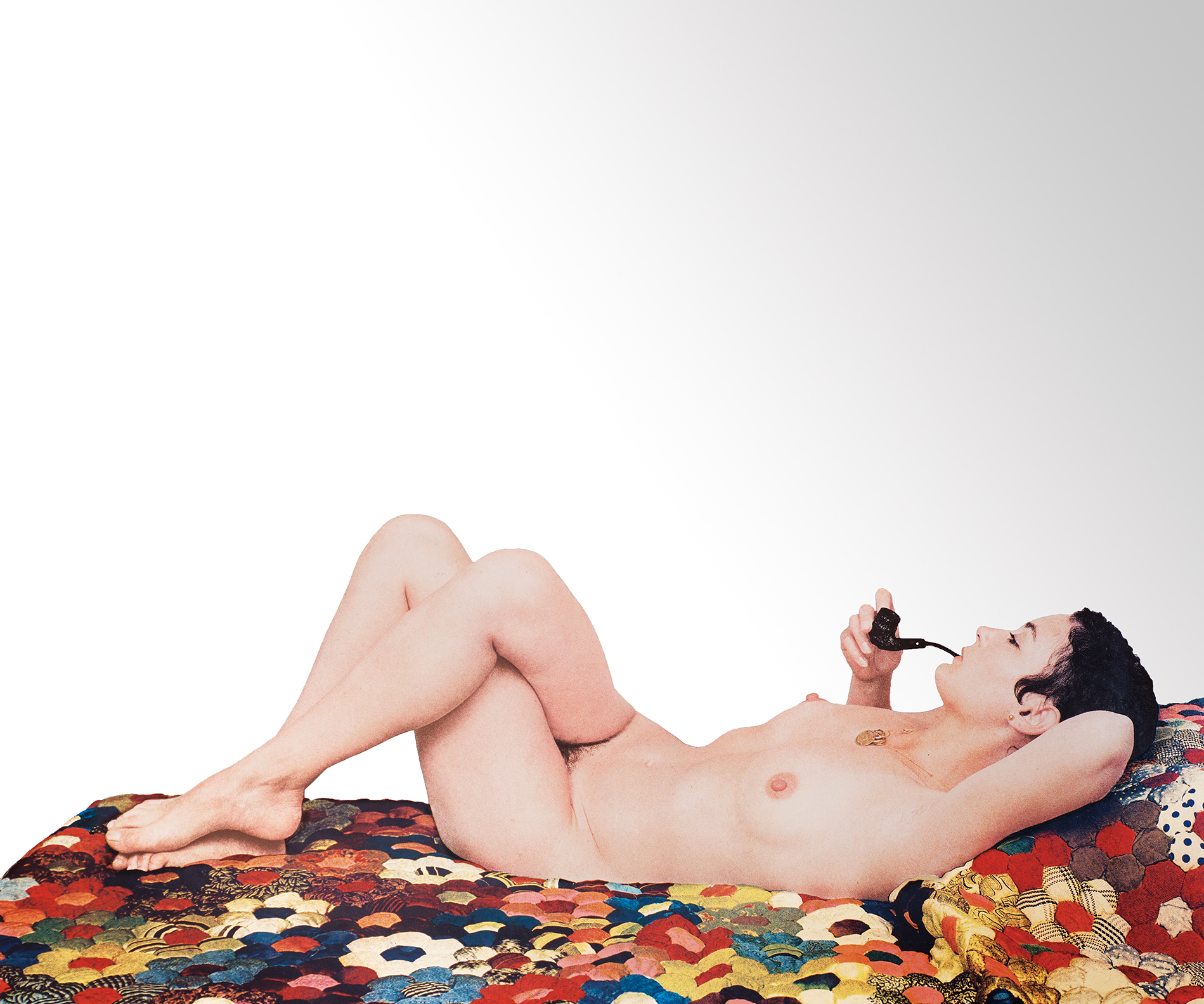
Michelangelo Pistoletto: ‘La Venere con la pipa’, 1973 – serigraph on steel, 150×125 cm.
Brown’s London Art Weekend (3-5 July) helpfully drew attention to 100 galleries in Mayfair and St. James through special openings and events. It led me to see things I might have missed: tantric drawings at Indian specialist Joost van den Bergh; a fine selection of Bruce Nauman prints at Sims Reed Gallery just as good a range of Matthew Smith’s luminous paintings upstairs at Browse & Darby; affecting photographs of Brigitte Bardot at Dadiani, along with an engaging story of how they were taken; and the use Ethiopian artist Wosene Worke Kosrof makes of the 228 symbols of Amharic at the newly relocated Gallery of African Art. My first image is one from the largest gathering of Pistoletto mirror works I’ve seen – tucked away above Dover Street in the Repetto Gallery. ‘Venus with a Pipe’ subsumes the viewer in a gentle play on gender expectations.
My second is from a sell-out show for which independent dealer Megan Piper (not a pipe smoker so far as I know) filled the Redfern Gallery with imposingly scaled works by Neil Stokoe. He’s relatively unknown, but studied with Hockney, Bowling, Caulfield et al at the Royal College in the early sixties. Stokoe was present to explain that he liked painting interiors because he could combine internal and external light sources, and could use any colour whilst remaining a realist rather than a formalist. The results, with figures relating mysteriously to each other and their surroundings, have considerable zip.
Neil Stokoe: ‘Mirrored Optical Staircase and Nude Woman’, 1983 – Oil on Canvas, 222 x 213 cm
Most days art Critic Paul Carey-Kent spends hours on the train, traveling between his home in Southampton and his day job in London. Could he, we asked, jot down whatever came into his head?
Paul’s ART STUFF ON A TRAIN #116: These Feet Are Made for Painting
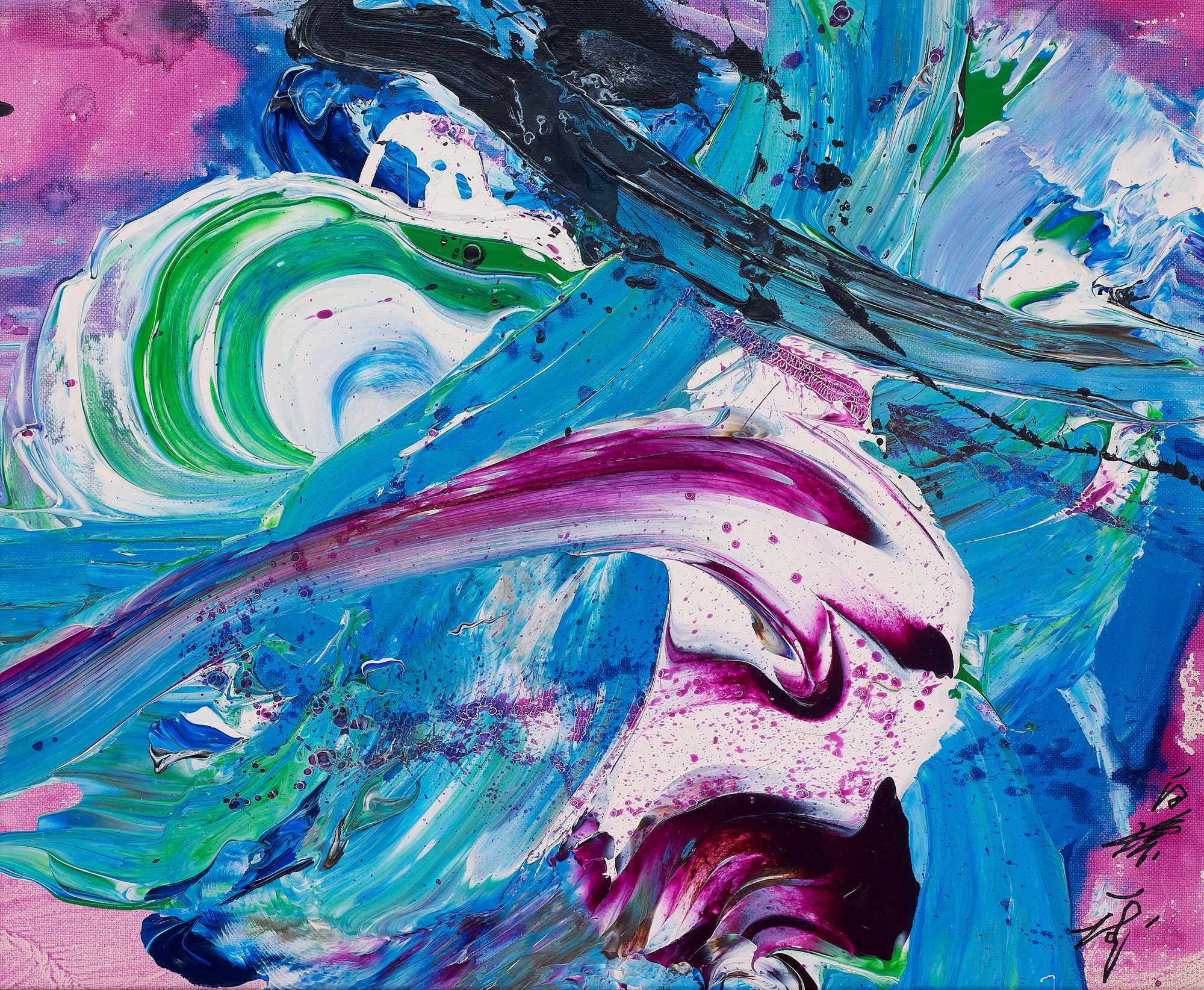
Kazuo Shiraga: ‘Kocho’ (Butterfly), 2003 – 45.5 x 37.9cm
The Japanese Gutai movement is now seen, not as a late-to-the-party oriental imitation of abstract expressionism, but as a seminal conjunction of painting, performance and the concrete assertion of freedom in the aftermath of Japan’s disastrous war.
Its market star is Kazuo Shiraga (1924-2008), and his signature move was to paint with his feet by swinging over the canvas on a rope. The just-finished Masterpiece Fair had four examples, and there’s no denying their persuasive energy. So when I heard that the soon-to-retire American-Irish tap star Michael Flatley was showing paintings made by dancing on the canvas (to 18th July by appointment at 12 Hay Hill Club) I wondered whether he admired Shiraga. Indeed he does. And while he may not have been first, the logic for Flatley’s production method is appealingly different and clear. I was sympathetic, then, and some of the paintings evoke his movement to colourful effect, though he needs a harsher edit. Still, Flatley’s paintings (see www.michaelflatleyart.com) have sold at auction for up to £70,000, much the same as Shiraga was fetching five years ago, before a recent surge in interest raised his prices – Flatley-sized examples were around £300,000 at the Fair. It will be interesting to see whether that differential increases as Flatley’s dance celebrity recedes, or reduces as he does most of his dancing on canvas…

Michael Flatley: ‘The Power’- acrylic on marley, 150 x 150cm
Paul’s ART STUFF on a plane # 115: ‘The Famous Fives’
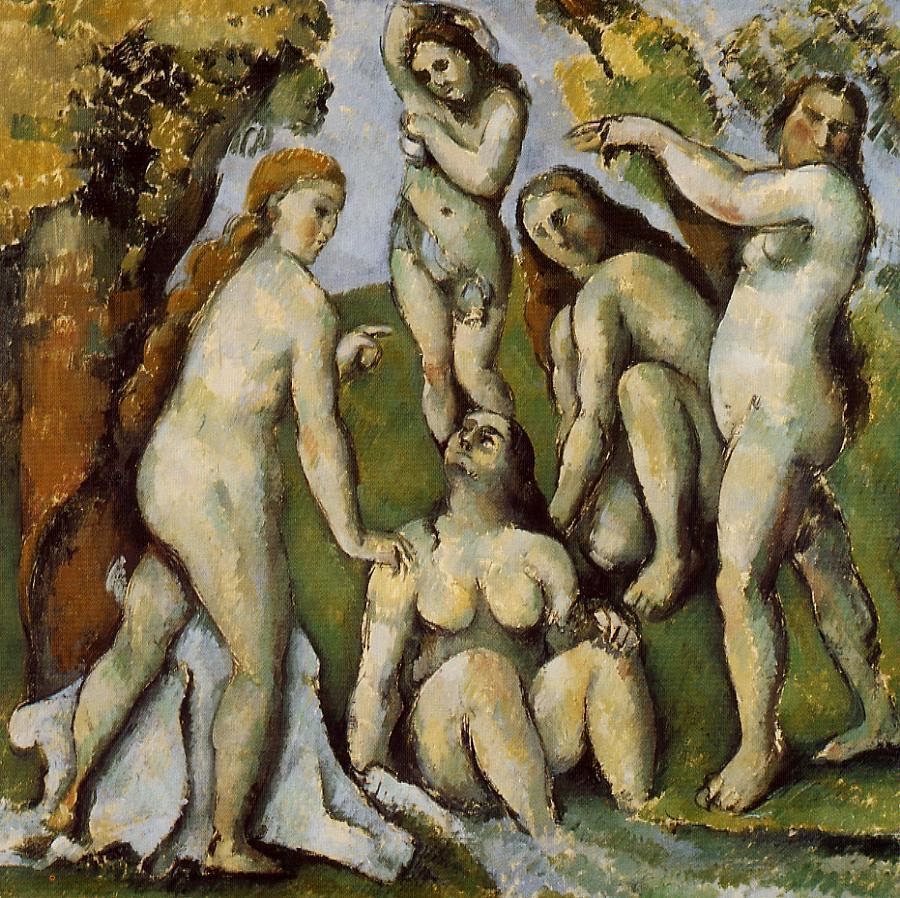
Paul Cezanne: ‘Five Bathers’, 1883/87
Basel’s Kunstmuseum, which covers the historic cannon pretty comprehensively, was closed for restoration during my visit to last week’s Art Fair. The focus shifted to the Museum für Gegenwartskunst (Museum of Contemporary Art), which rose to the challenge magnificently: with a celestial choice of Frank Stella paintings; a curiously homonymic floor each for Martin and Joseph Boyce and Beuys; and a selection from the displaced collection. That last highlighted a coincidence I had previously missed: that the Kunstmuseum has two of the finest paintings ever made of five women: Cezanne’s ‘Five Bathers’, 1883/87 and Osckar Schlemmer’s ‘Stairway of Women’, 1923, which both sublimate individual form to overall design in dramatically different ways. To those I would add, most obviously, Picasso’s ‘Les Demoiselles d’Avignon’, 1907; plus Kirchner’s ‘Five Women in the Street’, 1913; and maybe Degas’ ‘Dancers, Pink and Green’, 1890 to make a 5 x 5. I may well have missed examples, and it would be nice if one was by a woman, but most of Degas’ famous paintings of dancers feature four, six or many dancers; and classical paintings of several women tend to include other elements such as putti or male Gods. Had there been five Graces rather than three, things might have been different…
Osckar Schlemmer ‘Stairway of Women’, 1923
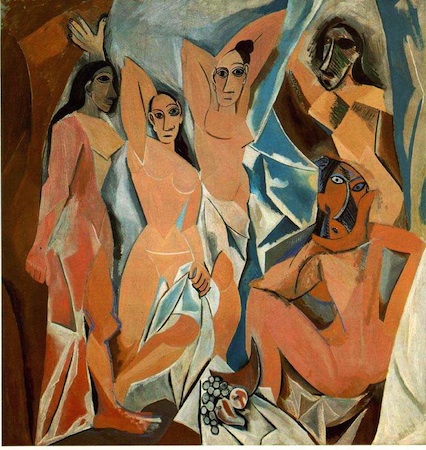
Picasso: ‘Les Demoiselles d’Avignon’, 1907
Kirchner: ‘Five Women in the Street’, 1913
Degas: ‘Dancers, Pink and Green’, 1890
Most days art critic Paul Carey-Kent spends hours on the train, or last week on the plane to Basel. Could he, we asked, jot down whatever came into his head?
Paul’s ART STUFF on a train # 114: ’A Hundred Women Wanted’
Jean-Baptiste-Ganne:_’Détumescences’, 2012
The surprise of a recent trip to Paris was the Musée d’art contemporain du Val de Marne – known as Mac/Val – on the southern outskirts. This proved to be an immense and superbly appointed space, much bigger than any suburban equivalent in England. The staff were friendly, the documentation good, the café excellent (distinguishing feature: free carrots). There’s a capacious permanent collection, but the big draw was ‘Chercher le garçon’, a multi-media show with no fewer than a hundred male artists, many represented by several works, looking at masculinity today. The in-house curation kept a flow of connections round this complicated network, and often employed the neat trick of co-opting former generations’ seminal artists (Duchamp, Pollock and Maplethorpe were prominent) by exploring contemporary artists’ views of how they had constructed their masculinity.
Highlights included six paintings by Brain Dawn Chalkley, who pointed me towards the show and film of Simon Faithfull’s ‘Shy Fountain’, 2008, which only comes forth when no-one is present, so bringing a hint of male performance anxiety to the paradoxes of idealist philosophy and linking it to Jean-Baptiste Ganne’s ‘Détumescences’ in which sports trophies have been melted. There were ludicrous moments – Steven Cohen tying a cock to his cock in front of the Eiffel Tower sticks in the mind – but also many familar artists well-contextualised and some interesting discoveries. So I’d recommend checking out MAC/VAL, even if you visit Paris after the men move out on 30 August. Given this was one show in which a lack of female artists made sense, maybe they could find a hundred women to ‘Chercher la femme’ next year.
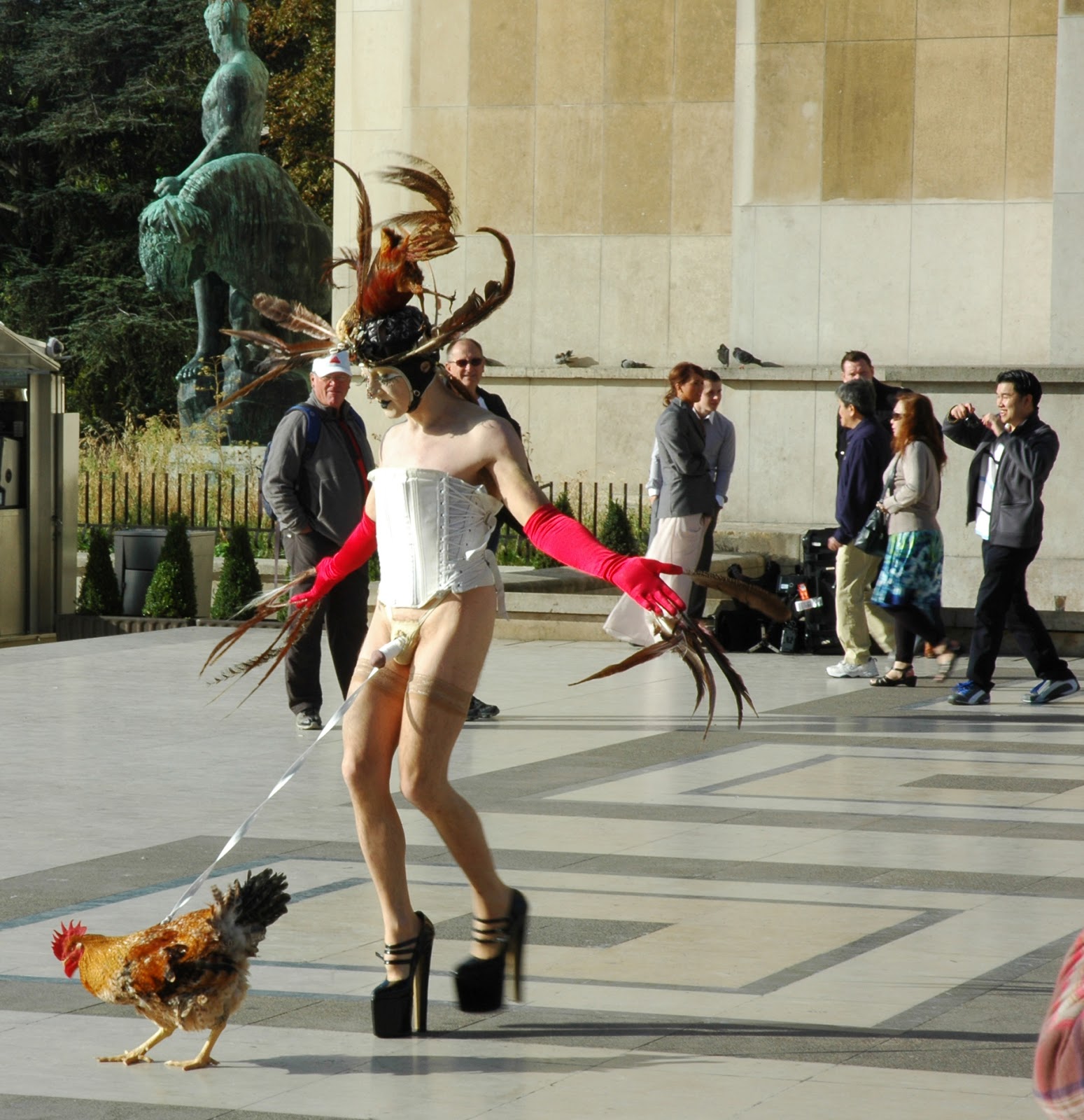
Still from Steven Cohen: ‘Coq/Cock’, 2013
Paul’s ART STUFF on a train # 113: ‘Transformation’
‘Emblems of Transformation 95′ – Courtesy of the Francesco Clemente and Blain|Southern
I tend to associate the Italian Francesco Clemente, now 63, with the big neo-expressionist canvases of the Neo-Expressionist / Transavantgarde movement – which had its moment in art history as the 1980’s antidote to minimal and conceptual, and is best left there. Perhaps that view was always simplistic, but now it’s now way out of date. For many years Clemente has spent much of his time in India, and is more Transcultural then Transavantgarde. He has often collaborated with local artisans, and that’s the case in his new show of 108 watercolours (at Blain|Southern to 4 July). Clemente’s fluid watercolours – often of equally watery themes – are added to by a family of miniaturists from Rajasthan. If the Chapmans make Goya worse to make a point, then the Indians make Clemente better, though of course – being Clemente’s lead – it’s also a form of self-improvement. The key is that the contrasts work aesthetically, counterpointing generality with detail convincingly enough to absorb absurd contrasts of scale; and also thematically – turning the relatively abstract and loose into the wittily surreal and precise. A rainbow becomes a road, a woven pattern reveals swimmers, a tree contains a lovers’ tryst, and hearts are eroticised by the insertion of a sex scene… There are 108 beads in the japa mala which Hindus and Buddhists use to meditate, hence the 108 paintings which serve the overall aim of illustrating transformation through transformation. It’s an entrancing show.
‘Emblems of Transformation 67′ – Courtesy of the Francesco Clemente and Blain|Southern
Paul’s ART STUFF on a train # 112: ‘The World Museum’

Bark painting of a barramundi, from Western Arnhem Land, c. 1961
‘Why is it called the British Museum’, I heard someone ask last Saturday ‘when there isn’t anything from Britain?’ Fair point, I thought, passing as rapidly as possible through Egypt (not easy, it’s like Oxford Street among the mummies). ‘Defining beauty: the body in ancient Greek art’ is a highly-publicised demonstration of what its curator calls ‘nudity as the costume of righteousness’. It opens, perhaps erroneously, with a climactic bronze Apoxyomenos in which the insertion of copper lips is a real coup de theatre. That said, all 120 items are worth pondering. I proceeded to the less publicised but equally excellent ‘Indigenous Australia – enduring civilisation’, which shows how the Torres Strait islanders in particular use all manner of materials with great flair: turtle shell, cockatoo feathers, wallaby teeth… Then I ascended to Room 91 for the best exhibition of Pacific Island barkcloth textiles I’ve ever seen – slim competition, granted, but it’s a fine display; then came unexpectedly across an impressive survey, through 19 large examples, of the contemporary prints of American Jim Dine. The heart is his most famous motif, though I hadn’t seen it turned into pubic hair before… two prints featured only that: looking back from them, there’s also something suspicious about one of the hearts in the selection shown below. Eros has many guises in The World Museum…
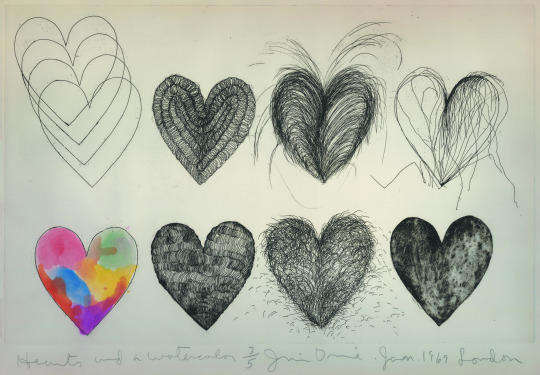
Jim Dine: ‘Hearts and a watercolor’, 1969
Most days art critic Paul Carey-Kent spends hours on the train, traveling between his home in Southampton and his day job in London. Could he, we asked, jot down whatever came into his head?
ART STUFF on a train # 111: ‘Book the Show vs. Show the Book’
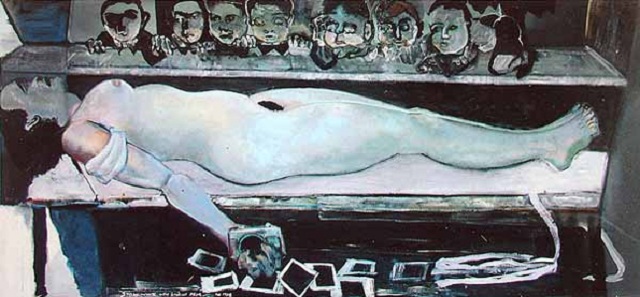
Marlene Dumas: ‘Snow White and the Broken Arm’, 1988
The thing about paintings is to see them, right? It’s a bit odd, then, to suggest that the book of Marlene Dumas at the Tate is better than the show, but apart from the show having just closed so removing the choice (‘The Image as Burden’ to 10 May) there was already a case to be made. First, the book is excellent: it mixes Dumas’s own often engaging thoughts with her selections from commentaries about her work, all ideally organised alongside the relevant illustrations. Second, Dumas’s style of successive ultra-thin washes doesn’t tend to lead to much surface effect: she loses less than some painters do in reproduction. Third, although one could hardly say that the Tate show is too small, many of the best paintings in the catalogue weren’t in London – you had to see the show in Amsterdam or wait until Basel in order to be able to compare the grid of heads of Models with those of Rejects, or to see Snow White and The Broken Arm 1988 Leather Boots, 2000, The Kiss, 2003 and the quadriptych of adult sized babies The First People, 1990, ie some of Dumas’s strongest works. London viewers did, on the other hand, get the sequence of Great Men, both versions of films spectre and the combination of Naomi Campbell with Princess Di – all among the least convincing productions of a fascinating but uneven artist. Maybe it was all a cunning plot to boost sales of the book…

Marlene Dumas: ‘Models’, 1994
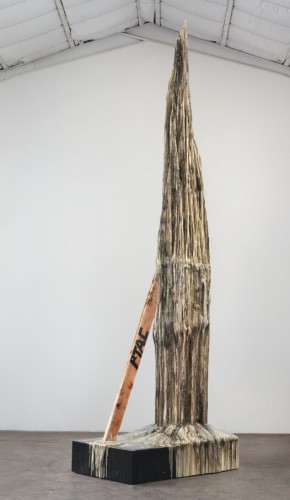
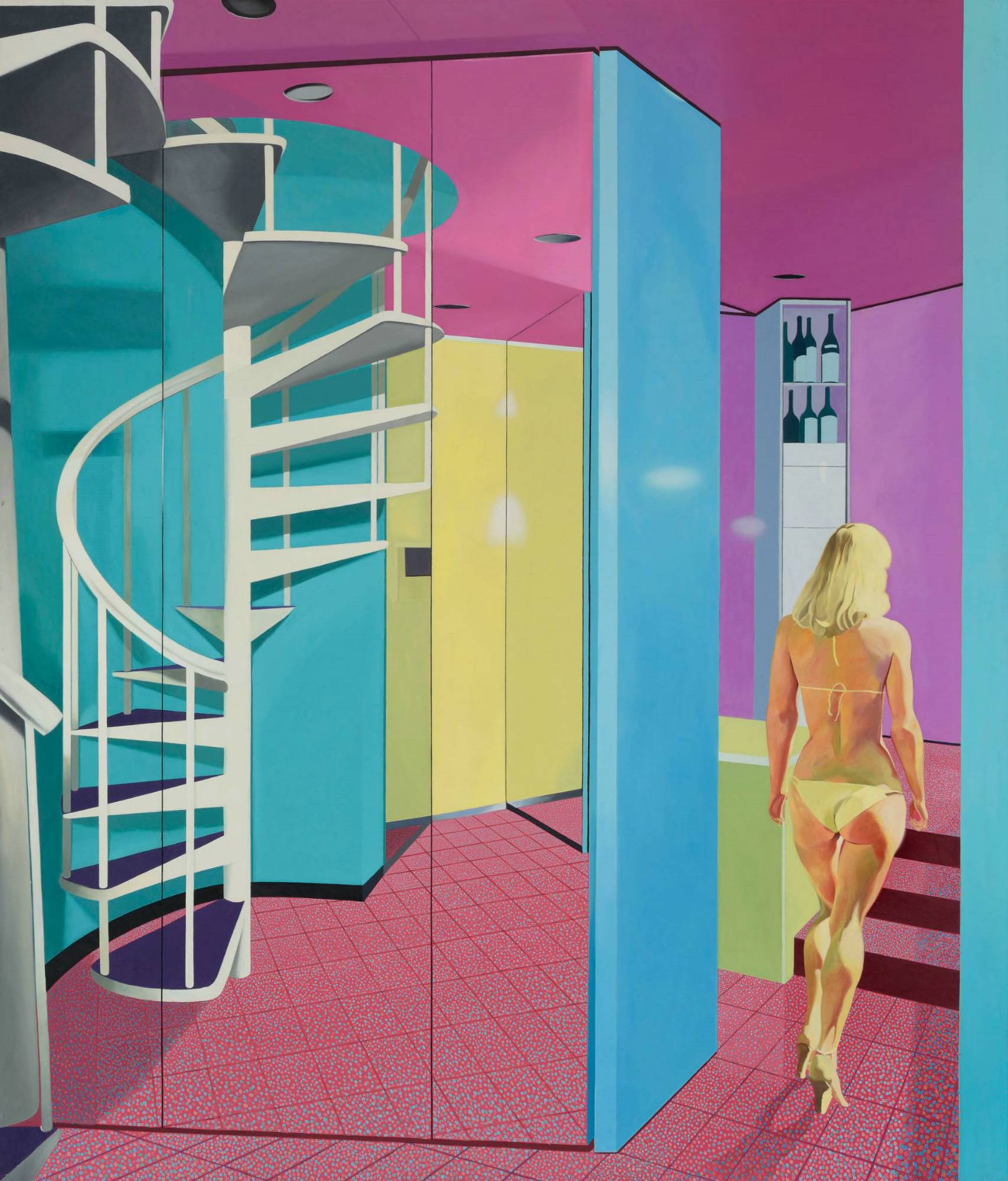
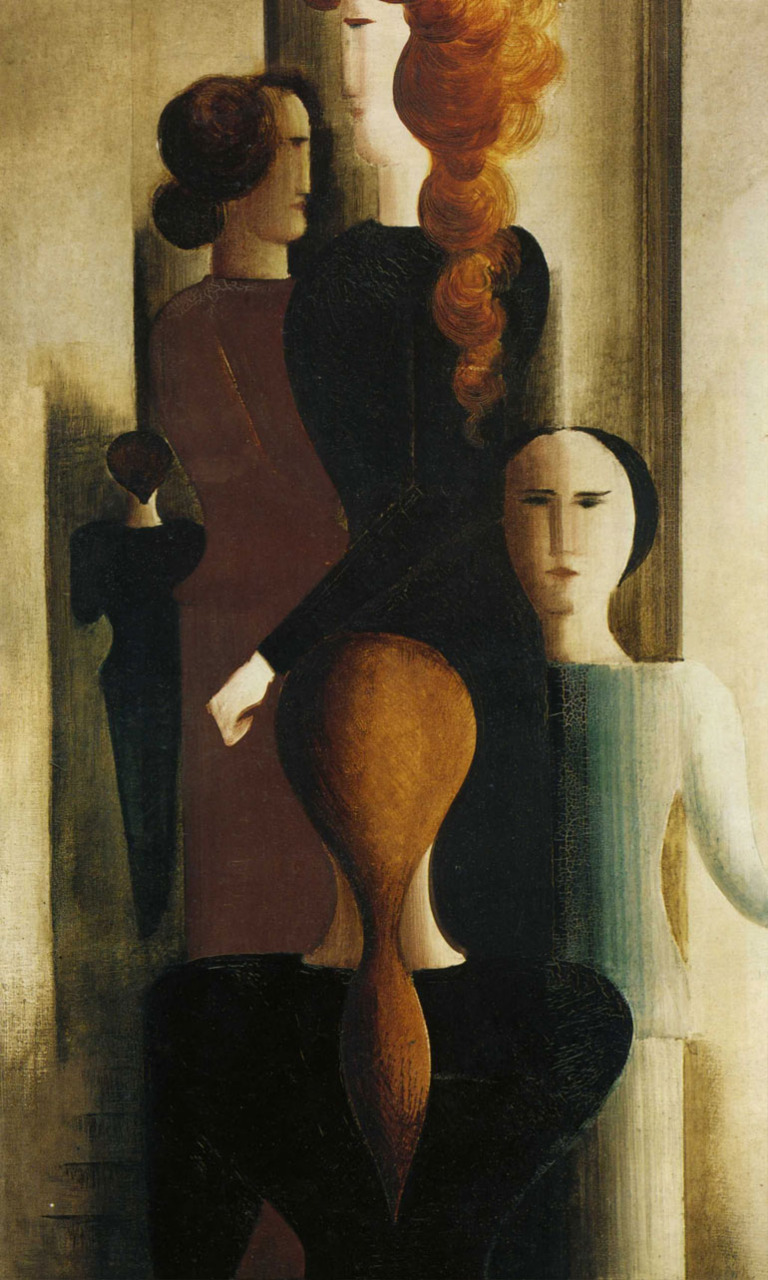

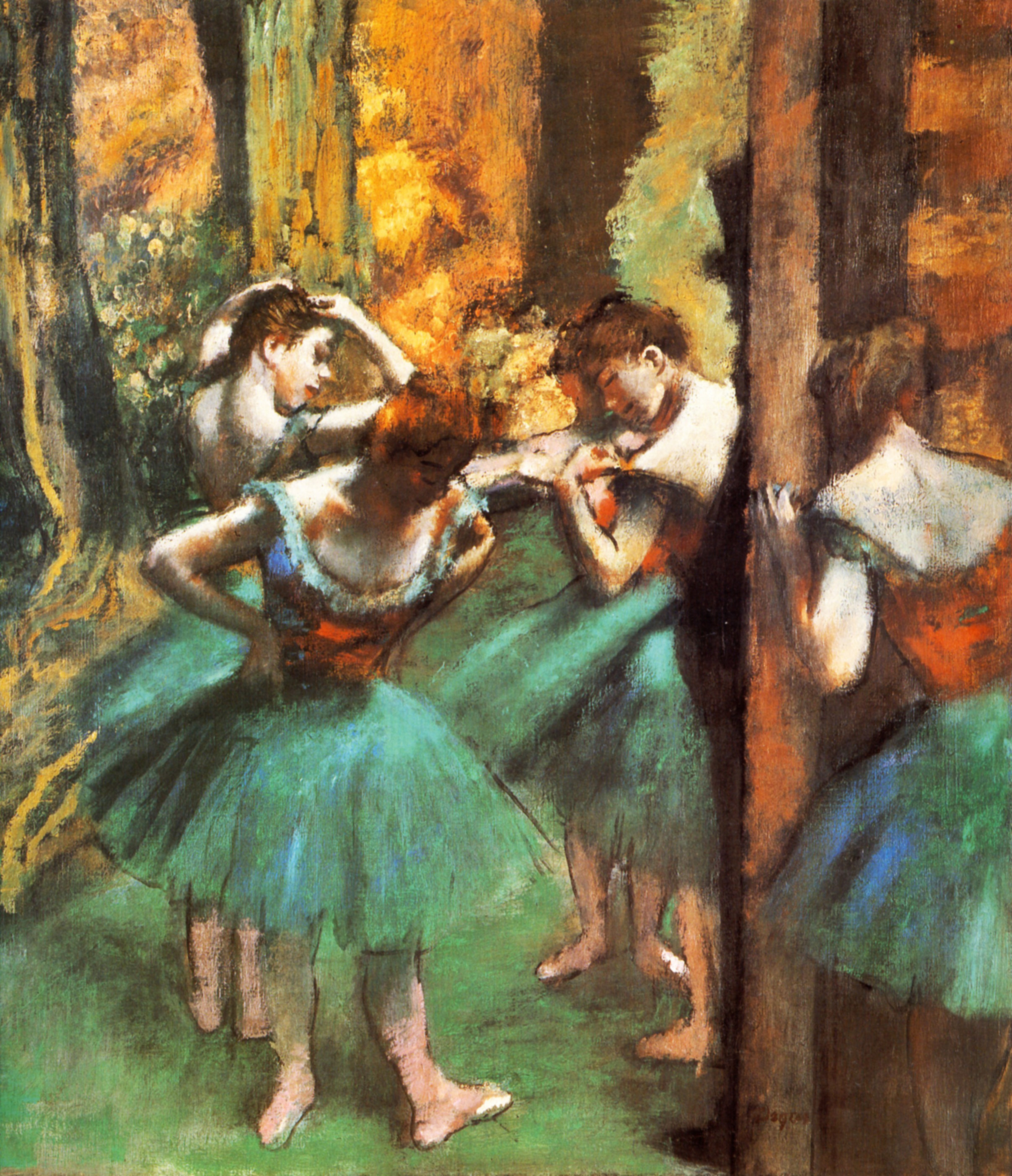
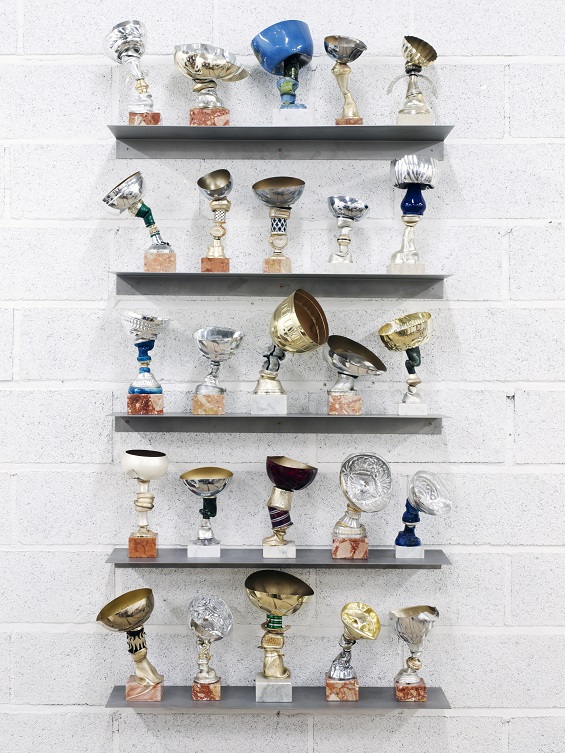
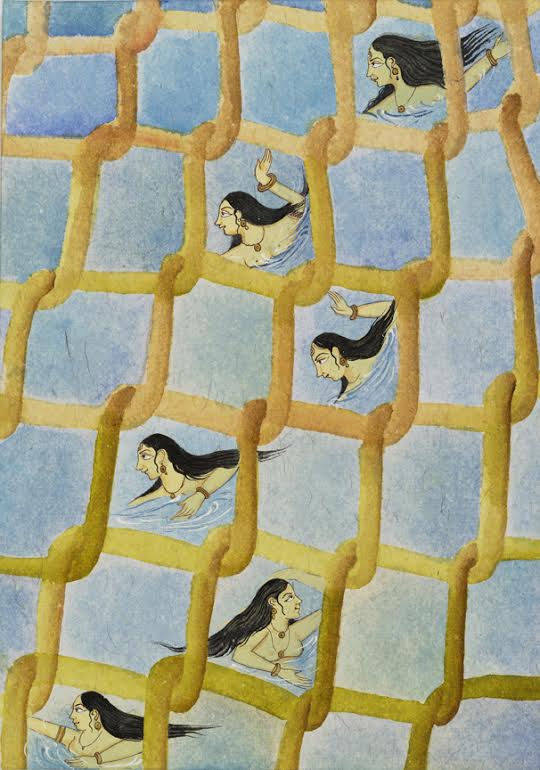


No comments:
Post a Comment
Note: only a member of this blog may post a comment.